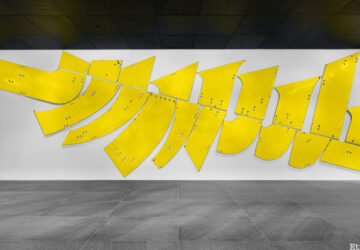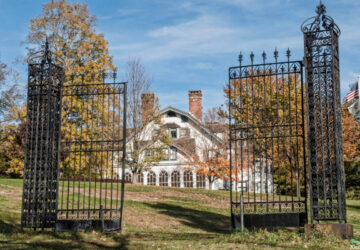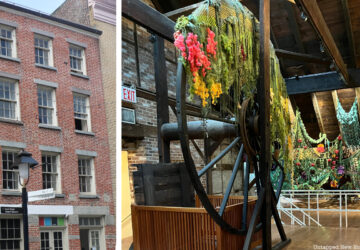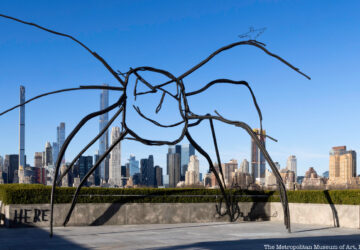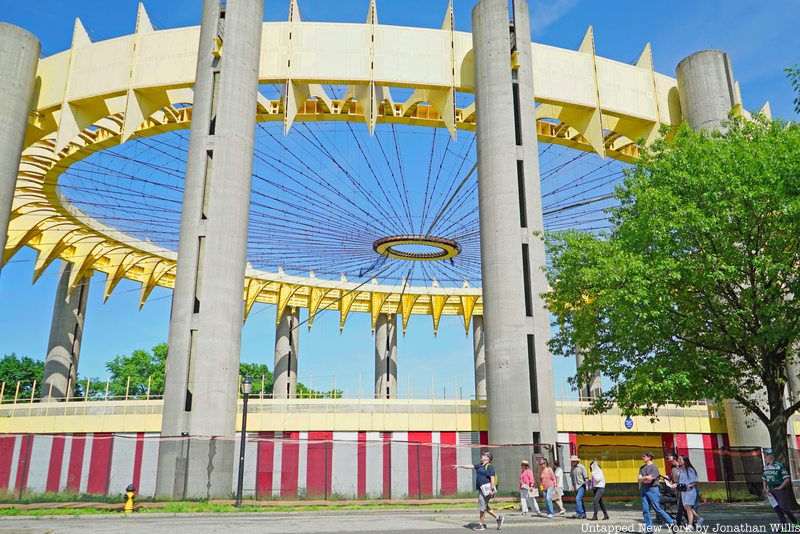Sixty years after the gates to Flushing Meadows Corona Park opened for the 1964-65 World’s Fair, enthusiasts of the global mid-century event still remember the awe and wonder felt as exhibitors from across the world brought the best of their culture and innovation to Queens. Today, we mark the anniversary with 20 fun facts about the fair pulled straight from the Official Guide book!
Over the next month, Untapped New York will celebrate the anniversary by looking back at some of the most iconic attractions, digging into where pieces of the fair ended up across the country once it closed, and what remnants still stand at Flushing Meadows Corona Park. Untapped New York will also host and be part of a variety of anniversary events!
This weekend, join Untapped New York’s Chief Experience Officer Justin Rivers for our Remnants of the World’s Fairs walking tour! In May, we partner with Queens Boro Dance Festival for a walking tour with pop-up performances that will represent countries present at the World’s Fair, including China, Africa, the Philippines, the Caribbean, Greece, and Ireland, and historic images from the collection of World’s Fair historian Bill Cotter. This event is part of Queens Theatre’s summer-long anniversary celebration.
1. The life-sized dinosaurs in Dinoland were created in upstate New York. They were floated down the Hudson Riveron barges, causing a monumental traffic snarl on New York City’s West Side Drive.
2. The maximum height of the New York State pavilion’s tallest tower was set by federal aviation authorities at 226 feet because of the Fair’s proximity to La-Guardia Airport. In 1939-1940, when planes used shorter landing approaches, there was no height limit.
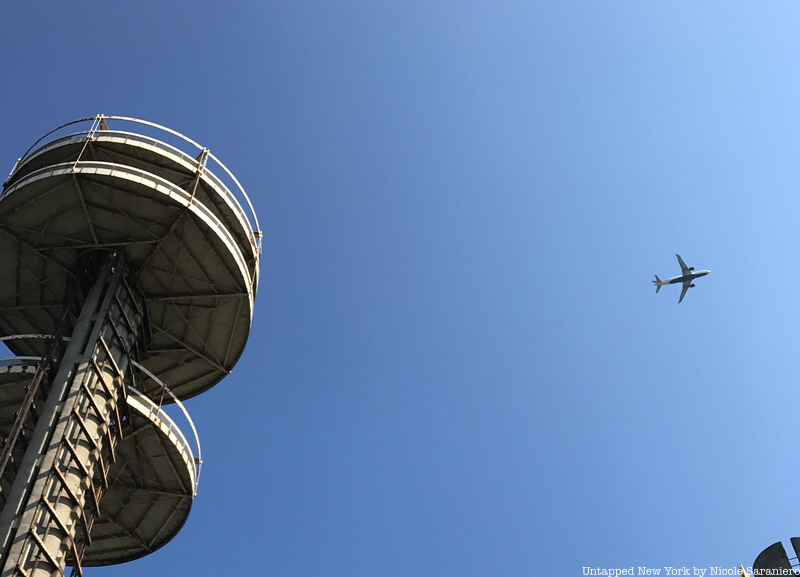
3. The Fair generated so many new telephone numbers that the Manhattan Yellow Pages included a World’s Fair classification in its listing. It also has a World’s Fair information page in the front of the book. Some 1,400 public push-button telephones have been installed at the Fair.
4. The world’s biggest cheese, in the Wisconsin pavilion, is protected against mice by glass, even though experts figured out that it would take one average-sized mouse 27 years to devour the whole cheese.
5. There are 14 miles of roadway inside the fairgrounds, almost all of it new. (and: More than $120 million was spent to expand and improve the arterial highways that led to the Fair. The street grid created for the 1939 fair was reused in 1964 and is still in the park today!)
6. The 110 restaurants at the Fair (not including refreshment stands) can serve about 30,000 people. The first Fair building in operation was the heliport, with its Top-of-the-Fair Restaurant. It opened on October 16, 1963.
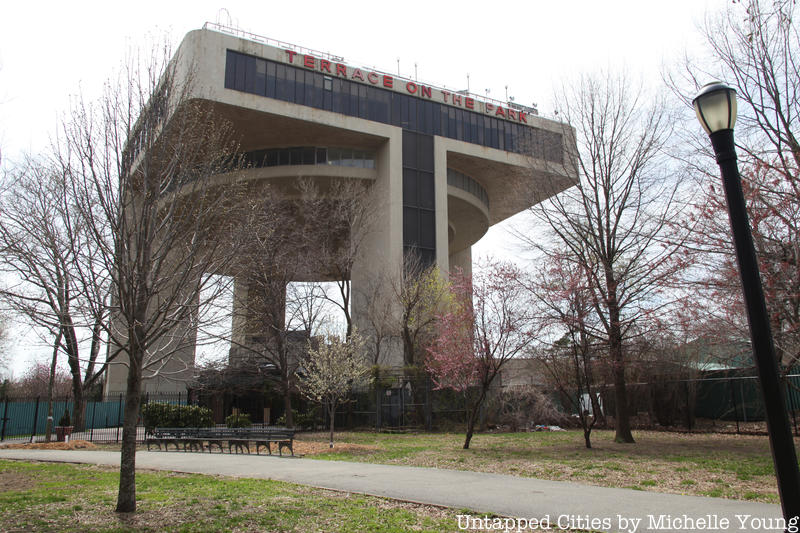
7. The World’s Fair official. song, “Fair Is Fair,” is by Richard Rodgers, who wrote the music for Oklahoma! and other hits.
8. Airlines brought some strange cargo to the Fair. Several of the wax figures in Walter’s International Wax Museum flew from Los Angeles to New York sitting up in passenger seats. The air-breathing porpoises at the Florida pavilion traveled on stretchers, covered with wet blankets.
9. About 80 percent of the Fair’s exhibits are free.
10. Under the pavilions stretch 160,000 feet of gas and water pipe, almost two million conductor feet of electric cable and 450 million feet of telephone wire.
11. Among the oldest man-made objects which are on display at the Fair are the Nubian artifacts in the Sudan pavilion and the relics of the Indus Valley civilization in the Pakistan pavilion, both more than 4,000 years old. The next oldest are a Shang Dynasty monster in the Republic of China pavilion and treasures taken from Tutankhamun’s tomb in the United Arab Republic pavilion, which date from before 1000 B.C.
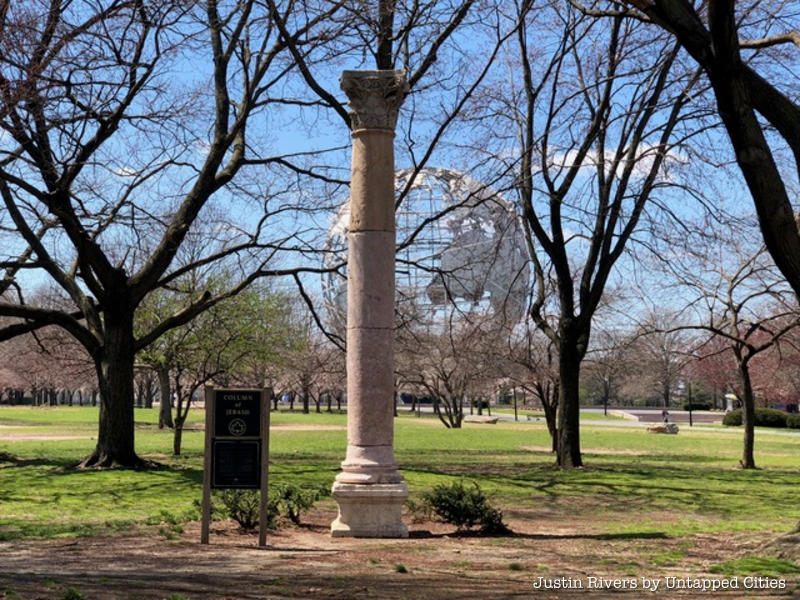
12. Although Fair pavilions will be torn down after the two Fair seasons, they were built to stand up under an Atlantic seaboard winter, and exhibitors saved little in construction costs. Most of the foundations and roofs have an estimated natural life of five years, and portions of some buildings could last as long as 40 years if not demolished.
13. The replica of Columbus’ flagship, the Santa Maria, made the 3,730-mile voyage from Barcelona almost without incident, but the trip overland to the fairgrounds was plagued with difficulties. Tree limbs were cut, telephone lines taken down, street lights swung out of the way, street signs removed, and the truck carrying the 110-ton ship became mired in soft asphalt. Cost of the five-mile trip: about $30,000.
14. This Fair occupies only about half of the Flushing Meadow acreage, but it is almost nine times larger than the 1962 Seattle Fair. (The Seattle Fair would have fit into the Transportation Area of the New York Fair.)
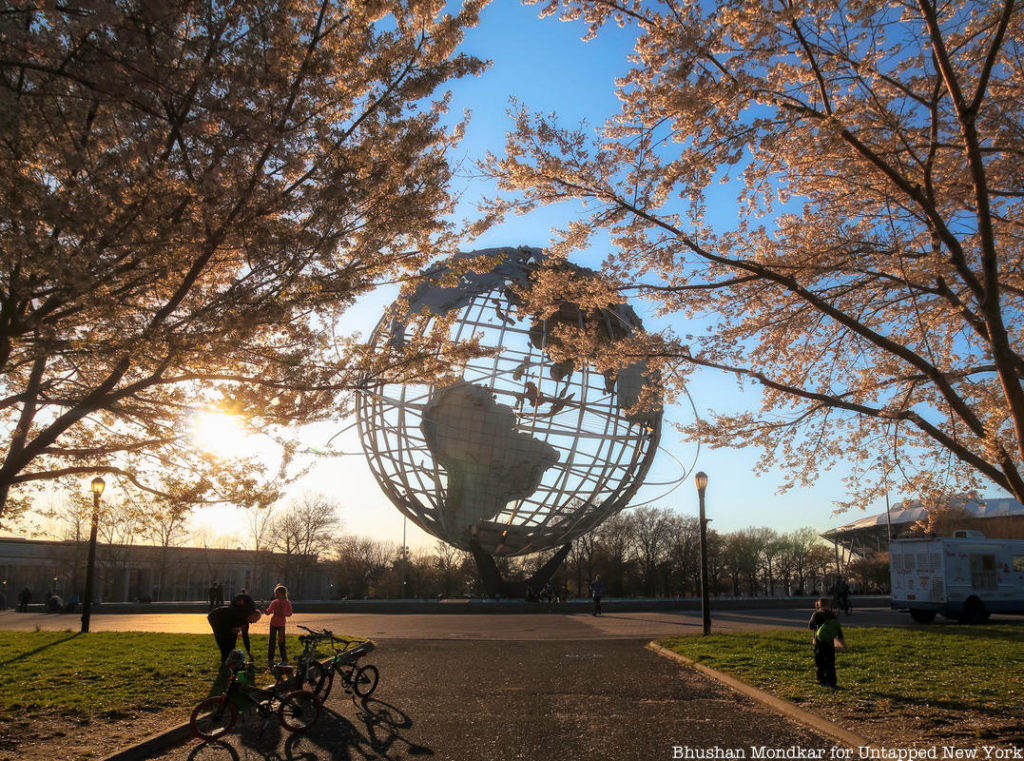
15. About 250,000 tons of steel were used to construct the various exhibit buildings.
16. The World’s Fair fire department consists of more than 100 specially trained men, all of them retired from the New York City Fire Department. They use special 17-foot pumpers—instead of the usual 25-footers—so the engines can turn around in the fairground’s narrow streets.
17. A consulting ornithologist was hired to help keep birds from dashing themselves against the brilliant Tower of Lights. Tests indicate little likelihood of this, but if necessary the light will be turned off. The light beam rising from the Tower of Light pavilion is so powerful that it can be seen from New Haven, Connecticut, to Atlantic City, New Jersey, a radius of about 100 miles.
18. Accommodations for Fair visitors total 100,000 rooms in the metropolitan area’s 380 hotels and motels. Of the total, approximately 10,000 rooms in Manhattan and 3,500 in the other boroughs have been added since 1961.
19. The Fair’s closed-circuit television network of more than 250 receivers is the largest ever assembled.
20. The demolition clause in the exhibitor’s contracts requires that at the Fair’s end, everything must be removed to a depth of four feet, and the plot must be graded and planted with grass.
Next, check our Remnants of the 1964-65 World’s Fair in Flushing Meadows Corona Park
